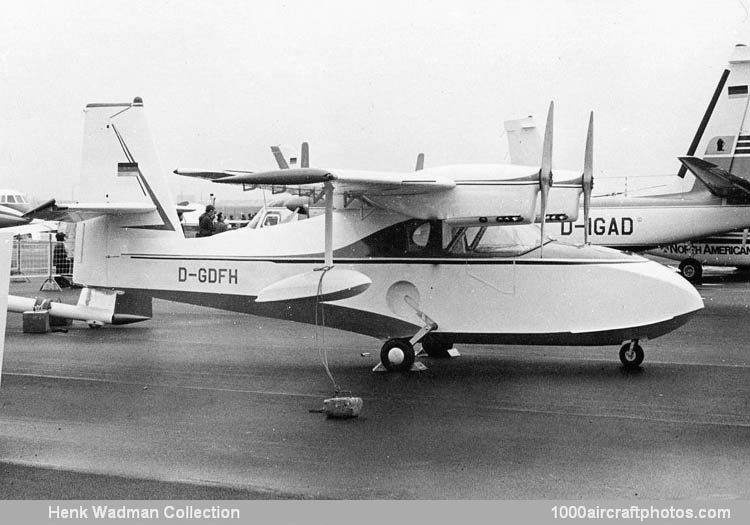Because of the lack of certification facilities in Denmark, in October 1968 Johansen flew the aircraft to Germany, where he was employed by Rhein Flugzeugbau in Mönchengladbach. Registered in Germany as D-GDFH in June 1969, it underwent the necessary flight trials and obtained a Type Certificate in the Normal category under FAR 23 regulations. However, the type never went into production, by 1980 the registration had been cancelled and Johansen donated the aircraft to the Dansk Veteranflysamling (Danish Vintage Aircraft Collection) at Stauning, Denmark."
Type: Three/four-seat twin-engined light amphibian.
Wings: Cantilever gull-winged high-wing monoplane. Wing section NACA 23012. Dihedral 8° 48' on center section, 0° on outer panels. Incidence 40 at root, 10 at tip. No sweepback. Conventional two-spar all-wood structure inboard of engines, with single spar outboard of engines. Fabric covered wooden full-span NACA slotted flaps and ailerons, the latter moving 20° downward when the flaps are fully extended to 40°.
Fuselage: Conventional hull of wood and glass fiber/polystyrol/foam sandwich construction. No regular step.
Tail unit: Conventional cantilever wooden structure, with tail plane mounted about one-third of the way up the fin. Variable incidence tail plane. Fabric covered rudder and elevators, with trim-tab in rudder.
Landing gear: Mechanically-retractable tricycle type, with main units retracting upward into fuselage sides. Main wheel tires size 5 x 5, nose wheel tire size 3.5 x 3.5. Hydraulic disc brakes of Johansen design. Non-retractable stabilizing float, on single cantilever strut, near each wing tip.
Power plant: Two 65 hp Walter Mikron III four-cylinder air-cooled inverted in-line engines, each driving a two-blade wooden propeller. Total of 18 gal (68 l) of fuel in floats and further 18 gal (68 l) in tank in lower part of fuselage.
Accommodation: Enclosed cabin with seats for pilot and up to three passengers.
